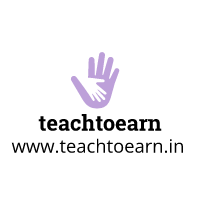In a country as vast and diverse as India, the challenge of delivering quality education to every child is immense. Policymakers often pursue top-down reforms, hoping large-scale programs will spark systemic change. But are these efforts truly impacting students at the ground level? In this thought-provoking conversation, Dr. Aniruddha Malpani, founder of Apni Pathshala, speaks with Mr. Rao, a senior government education official, about the real way to transform education—from the bottom up. This candid exchange sheds light on why empowering individual learners through community-based digital learning pods might be the key to lasting change.

Mr. Rao ( a senior Govt education official) : Dr. Malpani, I’ve heard a lot about your work with Apni Pathshala. As a policymaker, I’m always looking for ideas that can scale and impact millions of students. I would love to hear your thoughts on how to truly reform education.
Dr. Malpani: Thank you, Mr. Rao. I’m glad you’re thinking beyond just numbers. Let me put it bluntly: there are two very distinct ways of trying to reinvent education—the top-down approach and the bottom-up approach.
Mr. Rao (nodding): Yes, our government programs often take the top-down route. We aim for maximum reach—our National Education Policy, for example, touches crores of students. Isn’t scale what matters most?
Dr. Malpani: It’s tempting to believe so. Large-scale programs certainly generate impressive numbers for press releases and annual reports. But here’s the hard truth: most of these interventions are shallow.
Mr. Rao (surprised): Shallow?
Dr. Malpani: Yes. You can say you reached 10 million students, but if you follow up after a year, you’ll find that little has truly changed in individual lives. Episodic interventions—workshops, training camps, pilot projects—are great for photo ops and vanity metrics. They look good on glossy brochures and attract philanthropists, but they rarely transform a child’s actual learning journey.
Mr. Rao (thoughtful): So what’s the alternative?
Dr. Malpani: A bottom-up approach. Instead of trying to “fix” millions of students from the top, we focus on helping one student at a time. We make sure each child gets access to the right learning tools, the right mentors, and a safe, supportive environment. We build their confidence to become self-directed learners.
Mr. Rao: That sounds noble, but it also sounds painfully slow. How can that model ever match the scale we need for a country like India?
Dr. Malpani (smiling): I understand why you think that. Yes, the bottom-up method is slower. But it’s organic and far more sustainable. When you empower one student to take charge of their learning, they inspire and help others. It’s like lighting a lamp that lights many more. Real change spreads peer-to-peer, not policy-to-student.
Mr. Rao: You’re saying this builds a ripple effect?
Dr. Malpani: Exactly! Top-down approaches impose change. Bottom-up approaches grow change. Imposed solutions fade when funding stops or when new officials come in. Grassroots change persists, because the student owns the process. The student becomes the catalyst.
Mr. Rao: But governments can’t ignore the masses. We must show progress.
Dr. Malpani: I’m not suggesting you abandon your role. Government schools and policies lay the groundwork. But true transformation happens only when each student learns to learn independently. Otherwise, we are just training students to pass exams, not preparing them to thrive in life.
Mr. Rao: That’s a fair point. But most students don’t have access to such personalized support.
Dr. Malpani: That’s why we created Apni Pathshala. We’ve built community-based digital learning pods that don’t rely on expensive infrastructure. We use technology to enable self-learning, peer learning, and personalized learning journeys—while keeping costs incredibly low.
Mr. Rao (intrigued): So you’re creating small ecosystems of empowered learners?
Dr. Malpani: Precisely. We focus on depth over breadth. We teach children to believe they can learn anything on their own. Once that belief is unlocked, they don’t just study to pass exams—they explore, question, experiment, and teach others. That’s the long game.
Mr. Rao: I must admit, this approach has a lot of credibility. It reminds me of how true revolutions happen: quietly, at the grassroots.
Dr. Malpani: Well said. If we genuinely care about India’s future, we need to stop chasing hollow metrics and instead nurture independent, curious learners. Governments and philanthropists who want real impact should embrace this complementary model.
Mr. Rao (smiling): You’ve given me a lot to think about, Dr. Malpani. I can see how this philosophy fits the vision of Teach to Earn and Apni Pathshala. Perhaps we should explore partnerships to seed more of these learning pods in government school communities.
Dr. Malpani: I would welcome that collaboration, Mr. Rao. It’s time to give our children the confidence to take charge of their own education. That’s the only way we’ll create lasting, meaningful change.
Take matters into your own hands by starting your own digital learning pod! Your children will not get a second chance. Start a Teach to Earn Learning Pod
